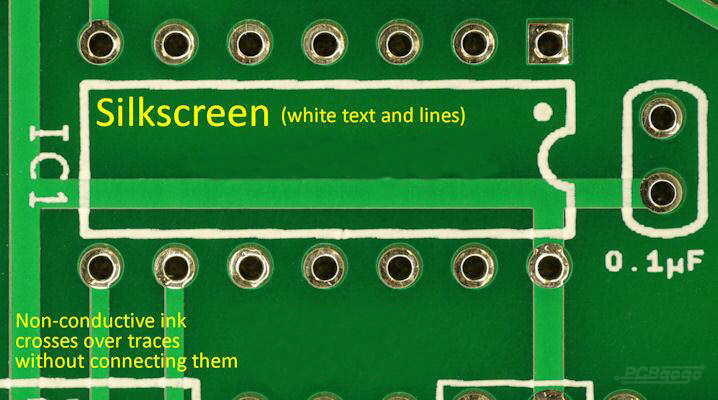

After that, you’ll need to cure inks and develop the board.

Moreover, the method requires you to coat your laminate with epoxy and expose it under UV light. It’s similar to applying a solder mask and offers high accuracy. LPI is your go-to method if you’re printing lines that are more than four miles. After that, you must expose the ink to some UV light.įurthermore, avoid using acrylic ink on PCBs with silver finishes because it’s not a suitable match-up. First, you’ll have to apply the ink on your board via CAD software. It’s a process that requires acrylic ink and an inkjet projector. Direct Legend Printing (DLP)ĭirect legend printing is the most expensive method among the three. There are three ways you can apply silk screen on your PCB. It also helps provide a device’s information, so you won’t be lost if you don’t have a datasheet. These test points also provide information that makes testing and troubleshooting easier.Ħ. Additionally, Silkscreens can help manufacturers and technicians identify board issues quickly with test points. Also, with a silkscreen, it’ll be easy to locate your components through reference designators.ĥ. Silkscreens can help you quickly identify your boards’ unique numbers and test points.Ĥ. Warning symbols: As the name implies, warning symbols tell you what voltage points you shouldn’t cross or handle.ģ.
Pcb silkscreen how to#
In contrast, the polarity indicators show you how to place polarized arrows.Ģ. The Pin 1 indicators show you how to connect component pins on a footprint pad. Under this, we have the Pin 1 indicator and polarity indicator. Reference indicators: silkscreen helps show reference indicators that help identify components through BOM. But, they help provide manufacturers and engineers with helpful information. Why is Silk-screening Important?Īs we mentioned earlier, silkscreens don’t affect a board’s functionality. Also, you can choose from various fonts, but ensure the values stay legible.Īdditionally, the traditional method for silk-screening requires you to stretch a polyester screen on aluminum frames, use a laser photoplotter, curing ovens, and spray developer.

The more common colors for silkscreen texts are yellow, black, and white. Indeed, silkscreens use non-conductive epoxy ink that won’t interfere with your board’s performance. You’ll usually find silkscreens on the component side of any PCB, but it’s also possible to use them on the solder side (though it’s more expensive). Silkscreen is the topmost layer of a PCB that identifies parts of the PCB, marks, references, components, symbols, and test points. The point of using a silkscreen is for easy component identification. This article will show everything about silkscreen and what to do when designing a PCB with one. But don’t worry if you don’t know much about silkscreens. Undoubtedly, you may never get the proper component placement without it. In such scenarios, what you need for your PCB is a silkscreen. But what if you end up using the wrong component placement? After all, a standard PCB can use multiple resistors with different references, so how do you find the perfect positions to place components? Other DIY PCB silkscreen colors (black or yellow) are also available in is Silkscreen? After manufacturing a PCB, you’d need to place your components in their proper positions. For PCB express quick turn product, white is the standard silkscreen color. But with the development of silkscreen, increasingly, silkscreen adopts a new and advanced custom-built digital printer with an ink-jet technology. Traditionally, PCB silkscreen is processed with a traditional PCB screen printing process. Silkscreen information can include component identifiers, component reference designators, company logos, switch settings, test points, other instructions, part numbers, version numbers, etc. The decals and reference designators in epoxy ink on a printed circuit board so called because of the method of application - the ink is "squeegeed" through a silk screen, the same technique used in the printed of T-shirts. Silkscreen, also known as legend, refers to the text-based, human-readable information that printed on the surface of a printed circuit board, which seems like the signature of PCB board. PCB Silkscreen - The Signature of Printed Circuit Board


 0 kommentar(er)
0 kommentar(er)
